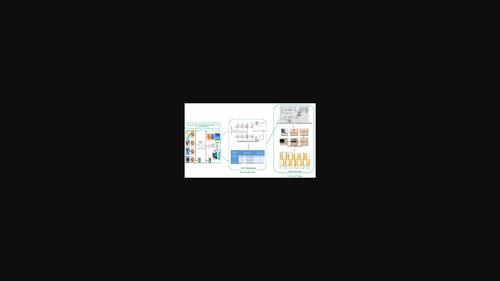当前位置:
X-MOL 学术
›
Int. J. Circ. Theory Appl.
›
论文详情
Our official English website, www.x-mol.net, welcomes your
feedback! (Note: you will need to create a separate account there.)
Implementation of hardware-in-loop for DC-link voltage balancing in hybrid ac/dc microgrid using interlinking converter
International Journal of Circuit Theory and Applications ( IF 1.8 ) Pub Date : 2022-08-29 , DOI: 10.1002/cta.3422 Subramanian Vasantharaj 1 , Vairavasundaram Indragandhi 1
International Journal of Circuit Theory and Applications ( IF 1.8 ) Pub Date : 2022-08-29 , DOI: 10.1002/cta.3422 Subramanian Vasantharaj 1 , Vairavasundaram Indragandhi 1
Affiliation

|
Bipolar hybrid ac/dc microgrid (MG) controls a DC and AC bus at the same time, supplies local loads with local resources, and offers multiple levels of dc voltages to resources and services. The applications are getting more popular in power systems. Due to its vital tasks in numerous applications, the interlinking converter (ILC) is an utmost crucial portion of the MG system. From this study, a 10-switch converter is provided as an ILC for a hybrid MG, which gains from both two-level (2L) and three-level (3L) converters at the same time, and it can be used to a wider range of power levels. This work provides a space vector modulation (SVM) for a 10-switch converter to maximize dc-link voltage consumption and minimize total harmonic distortion (THD) compared with other modulation techniques. The behaviour of the suggested SVM is compared with that of sinusoidal PWM. The suggested SVM was evaluated using OPAL-RT to show that it used DC bus voltage more reliably and produced significantly less THD than existing techniques. Furthermore, grid-tied ILC's architecture is improved to reduce low-order harmonics and used for dc-link voltage balancing. A real-time (RT) digital simulator (OP-5700) was used to test the inverter control technique. In MG, this hardware-in-the-loop simulation provides an excellent environment for designing and verifying system-level control algorithms. Simulations were run in a MATLAB/Simulink environment and confirmed using an RT simulator to validate the feasibility of the suggested topology.
中文翻译:

使用互连转换器在混合交直流微电网中实现直流母线电压平衡的硬件在环
双极混合交直流微电网(MG)同时控制直流母线和交流母线,为本地负载提供本地资源,并为资源和服务提供多级直流电压。这些应用在电力系统中越来越受欢迎。由于其在众多应用中的重要任务,互连转换器 (ILC) 是 MG 系统中最重要的部分。从这项研究中,为混合 MG 提供了一个 10 开关转换器作为 ILC,它同时从两级 (2L) 和三级 (3L) 转换器中获益,并且可以用于更广泛的应用功率电平范围。与其他调制技术相比,这项工作为 10 开关转换器提供空间矢量调制 (SVM),以最大化直流链路电压消耗并最小化总谐波失真 (THD)。将建议的 SVM 的行为与正弦 PWM 的行为进行比较。使用 OPAL-RT 对建议的 SVM 进行了评估,表明它更可靠地使用直流母线电压,并且产生的 THD 明显低于现有技术。此外,改进了并网 ILC 的架构以减少低次谐波并用于直流母线电压平衡。实时 (RT) 数字模拟器 (OP-5700) 用于测试逆变器控制技术。在 MG 中,这种硬件在环仿真为设计和验证系统级控制算法提供了出色的环境。仿真在 MATLAB/Simulink 环境中运行,并使用 RT 仿真器进行确认,以验证建议拓扑的可行性。使用 OPAL-RT 对建议的 SVM 进行了评估,表明它更可靠地使用直流母线电压,并且产生的 THD 明显低于现有技术。此外,改进了并网 ILC 的架构以减少低次谐波并用于直流母线电压平衡。实时 (RT) 数字模拟器 (OP-5700) 用于测试逆变器控制技术。在 MG 中,这种硬件在环仿真为设计和验证系统级控制算法提供了出色的环境。仿真在 MATLAB/Simulink 环境中运行,并使用 RT 仿真器进行确认,以验证建议拓扑的可行性。使用 OPAL-RT 对建议的 SVM 进行了评估,表明它更可靠地使用直流母线电压,并且产生的 THD 明显低于现有技术。此外,改进了并网 ILC 的架构以减少低次谐波并用于直流母线电压平衡。实时 (RT) 数字模拟器 (OP-5700) 用于测试逆变器控制技术。在 MG 中,这种硬件在环仿真为设计和验证系统级控制算法提供了出色的环境。仿真在 MATLAB/Simulink 环境中运行,并使用 RT 仿真器进行确认,以验证建议拓扑的可行性。实时 (RT) 数字模拟器 (OP-5700) 用于测试逆变器控制技术。在 MG 中,这种硬件在环仿真为设计和验证系统级控制算法提供了出色的环境。仿真在 MATLAB/Simulink 环境中运行,并使用 RT 仿真器进行确认,以验证建议拓扑的可行性。实时 (RT) 数字模拟器 (OP-5700) 用于测试逆变器控制技术。在 MG 中,这种硬件在环仿真为设计和验证系统级控制算法提供了出色的环境。仿真在 MATLAB/Simulink 环境中运行,并使用 RT 仿真器进行确认,以验证建议拓扑的可行性。
更新日期:2022-08-29
中文翻译:

使用互连转换器在混合交直流微电网中实现直流母线电压平衡的硬件在环
双极混合交直流微电网(MG)同时控制直流母线和交流母线,为本地负载提供本地资源,并为资源和服务提供多级直流电压。这些应用在电力系统中越来越受欢迎。由于其在众多应用中的重要任务,互连转换器 (ILC) 是 MG 系统中最重要的部分。从这项研究中,为混合 MG 提供了一个 10 开关转换器作为 ILC,它同时从两级 (2L) 和三级 (3L) 转换器中获益,并且可以用于更广泛的应用功率电平范围。与其他调制技术相比,这项工作为 10 开关转换器提供空间矢量调制 (SVM),以最大化直流链路电压消耗并最小化总谐波失真 (THD)。将建议的 SVM 的行为与正弦 PWM 的行为进行比较。使用 OPAL-RT 对建议的 SVM 进行了评估,表明它更可靠地使用直流母线电压,并且产生的 THD 明显低于现有技术。此外,改进了并网 ILC 的架构以减少低次谐波并用于直流母线电压平衡。实时 (RT) 数字模拟器 (OP-5700) 用于测试逆变器控制技术。在 MG 中,这种硬件在环仿真为设计和验证系统级控制算法提供了出色的环境。仿真在 MATLAB/Simulink 环境中运行,并使用 RT 仿真器进行确认,以验证建议拓扑的可行性。使用 OPAL-RT 对建议的 SVM 进行了评估,表明它更可靠地使用直流母线电压,并且产生的 THD 明显低于现有技术。此外,改进了并网 ILC 的架构以减少低次谐波并用于直流母线电压平衡。实时 (RT) 数字模拟器 (OP-5700) 用于测试逆变器控制技术。在 MG 中,这种硬件在环仿真为设计和验证系统级控制算法提供了出色的环境。仿真在 MATLAB/Simulink 环境中运行,并使用 RT 仿真器进行确认,以验证建议拓扑的可行性。使用 OPAL-RT 对建议的 SVM 进行了评估,表明它更可靠地使用直流母线电压,并且产生的 THD 明显低于现有技术。此外,改进了并网 ILC 的架构以减少低次谐波并用于直流母线电压平衡。实时 (RT) 数字模拟器 (OP-5700) 用于测试逆变器控制技术。在 MG 中,这种硬件在环仿真为设计和验证系统级控制算法提供了出色的环境。仿真在 MATLAB/Simulink 环境中运行,并使用 RT 仿真器进行确认,以验证建议拓扑的可行性。实时 (RT) 数字模拟器 (OP-5700) 用于测试逆变器控制技术。在 MG 中,这种硬件在环仿真为设计和验证系统级控制算法提供了出色的环境。仿真在 MATLAB/Simulink 环境中运行,并使用 RT 仿真器进行确认,以验证建议拓扑的可行性。实时 (RT) 数字模拟器 (OP-5700) 用于测试逆变器控制技术。在 MG 中,这种硬件在环仿真为设计和验证系统级控制算法提供了出色的环境。仿真在 MATLAB/Simulink 环境中运行,并使用 RT 仿真器进行确认,以验证建议拓扑的可行性。











































 京公网安备 11010802027423号
京公网安备 11010802027423号